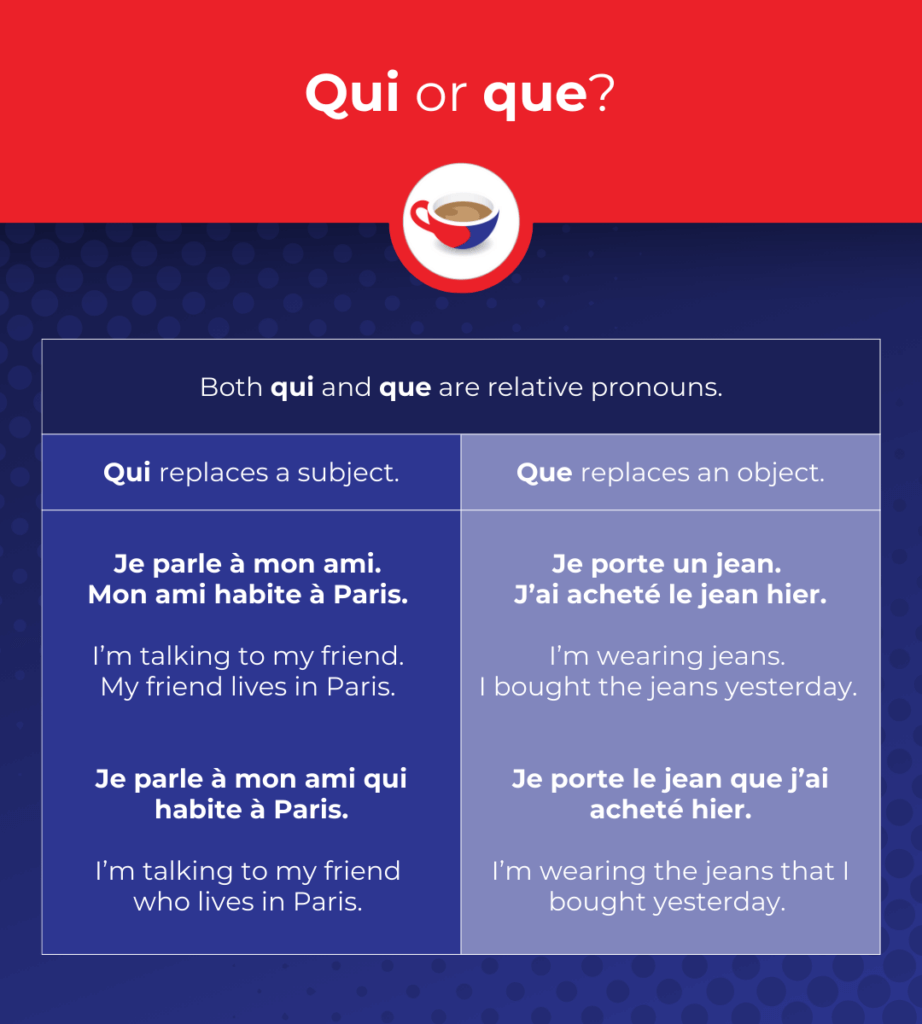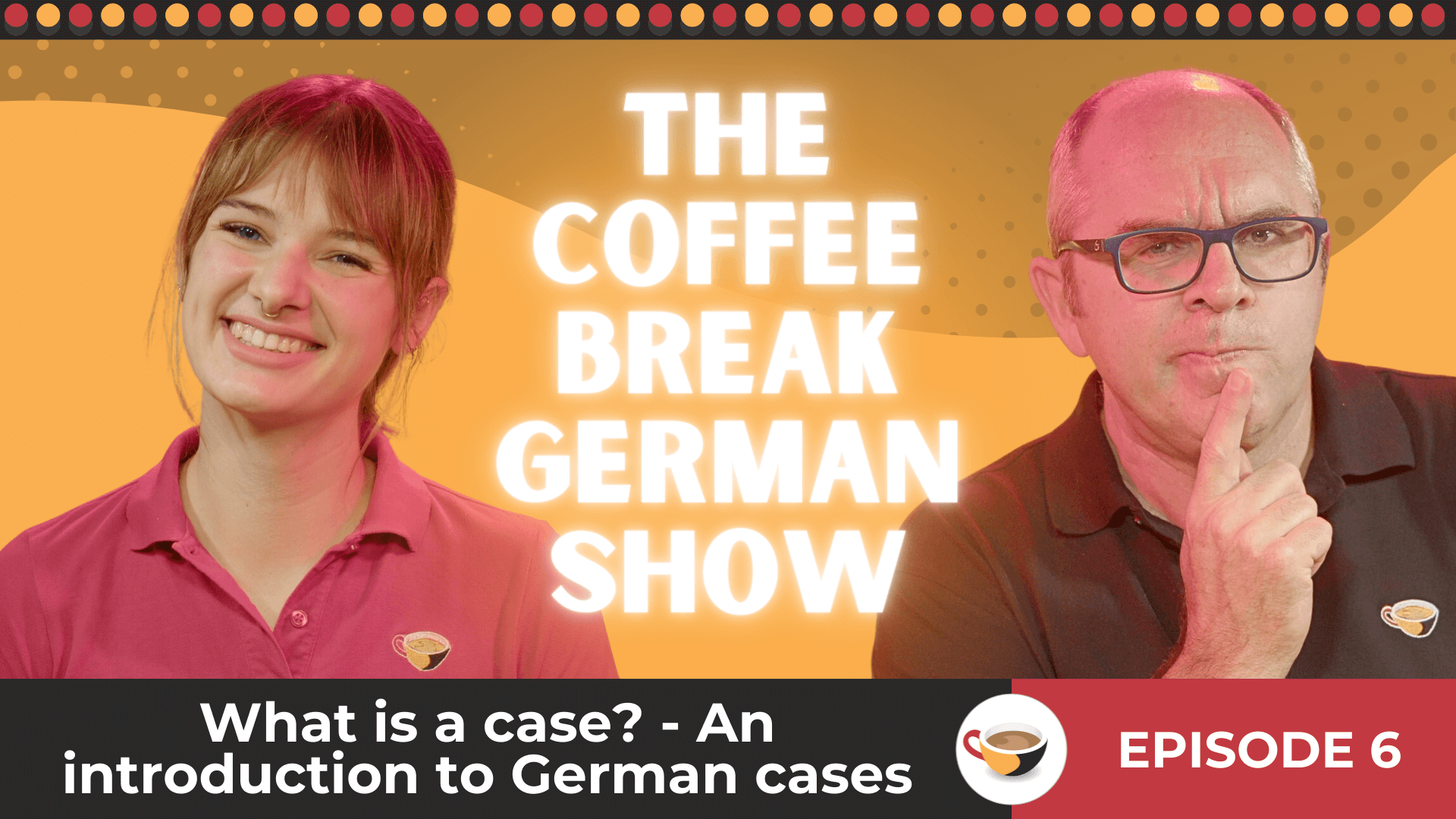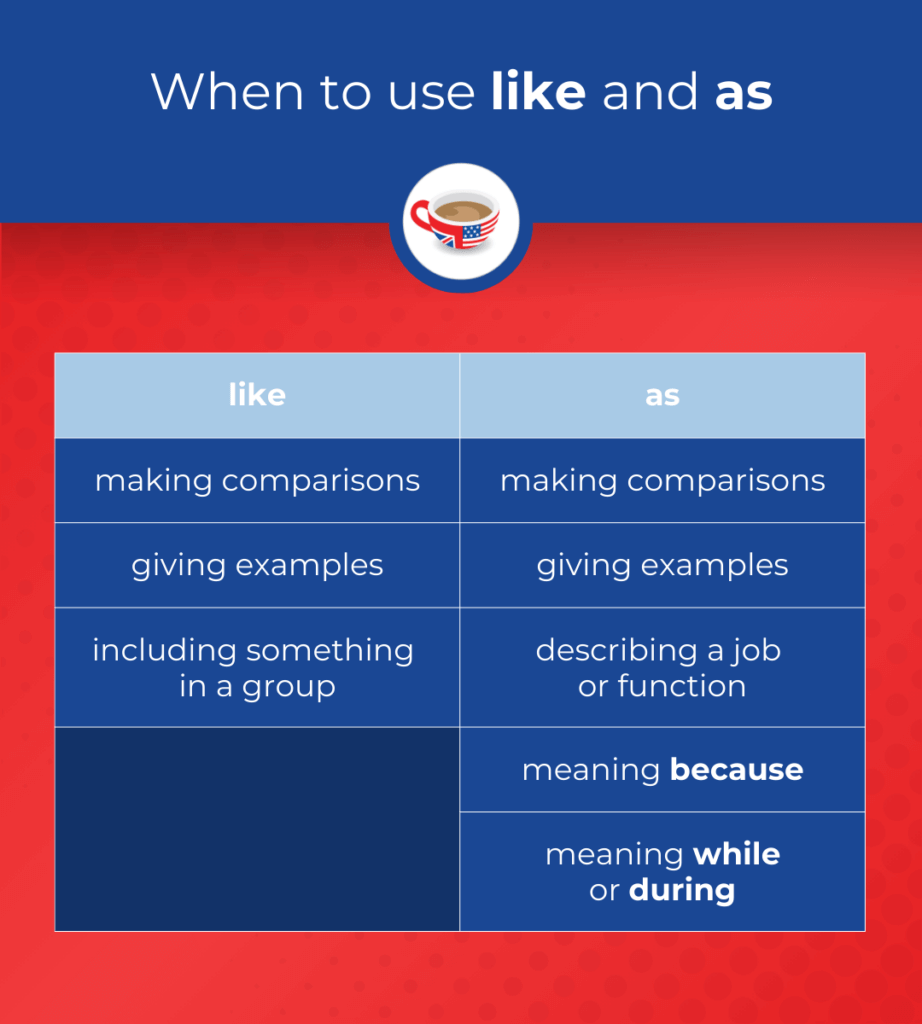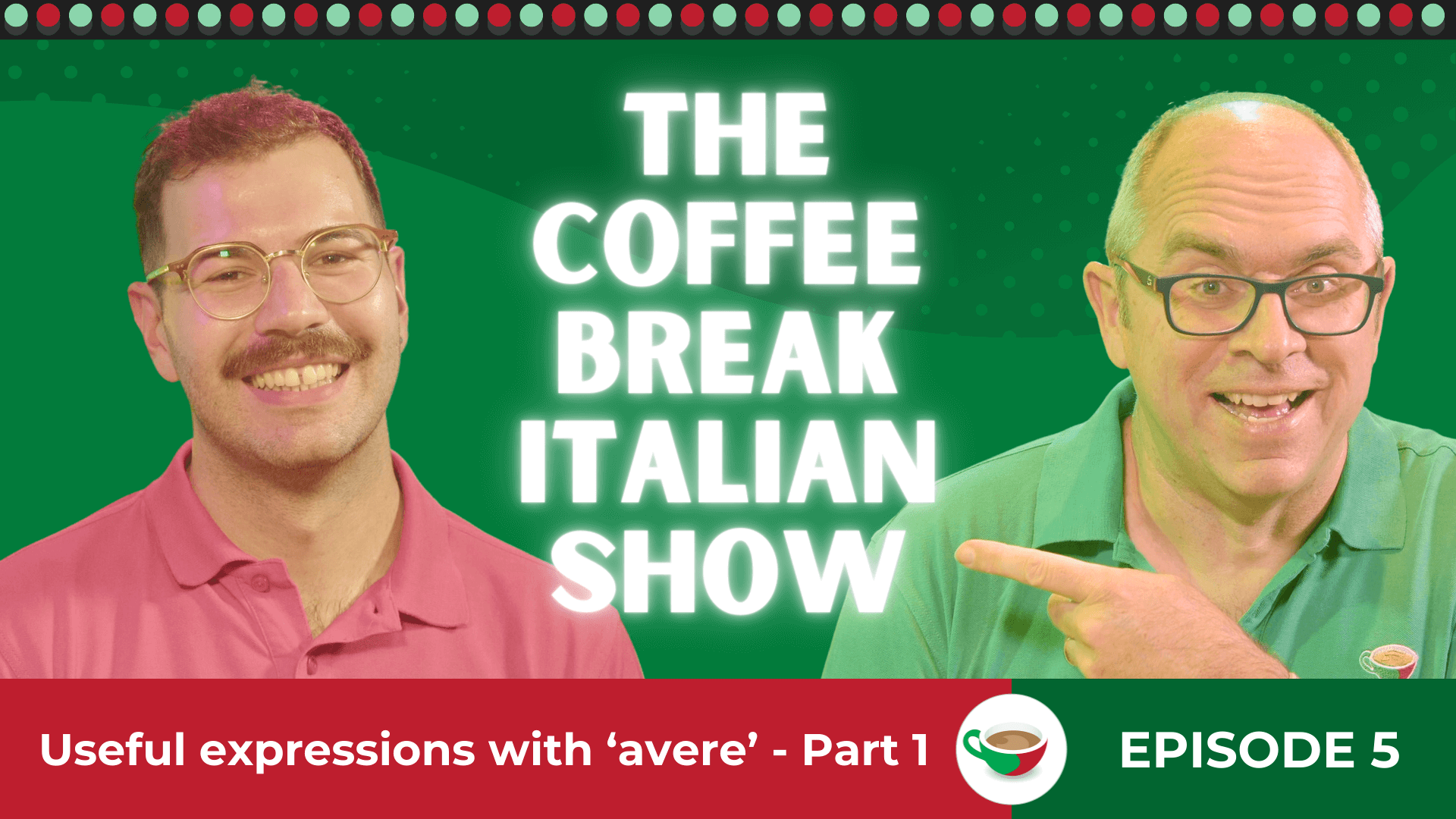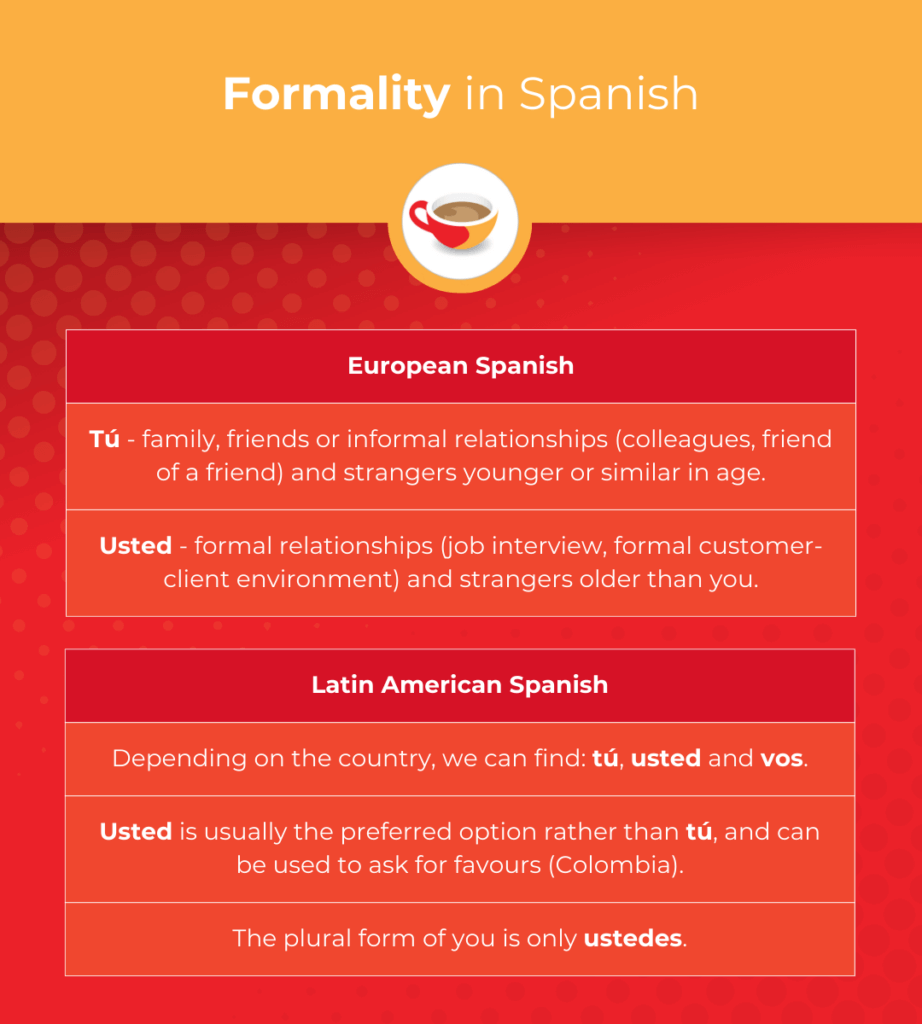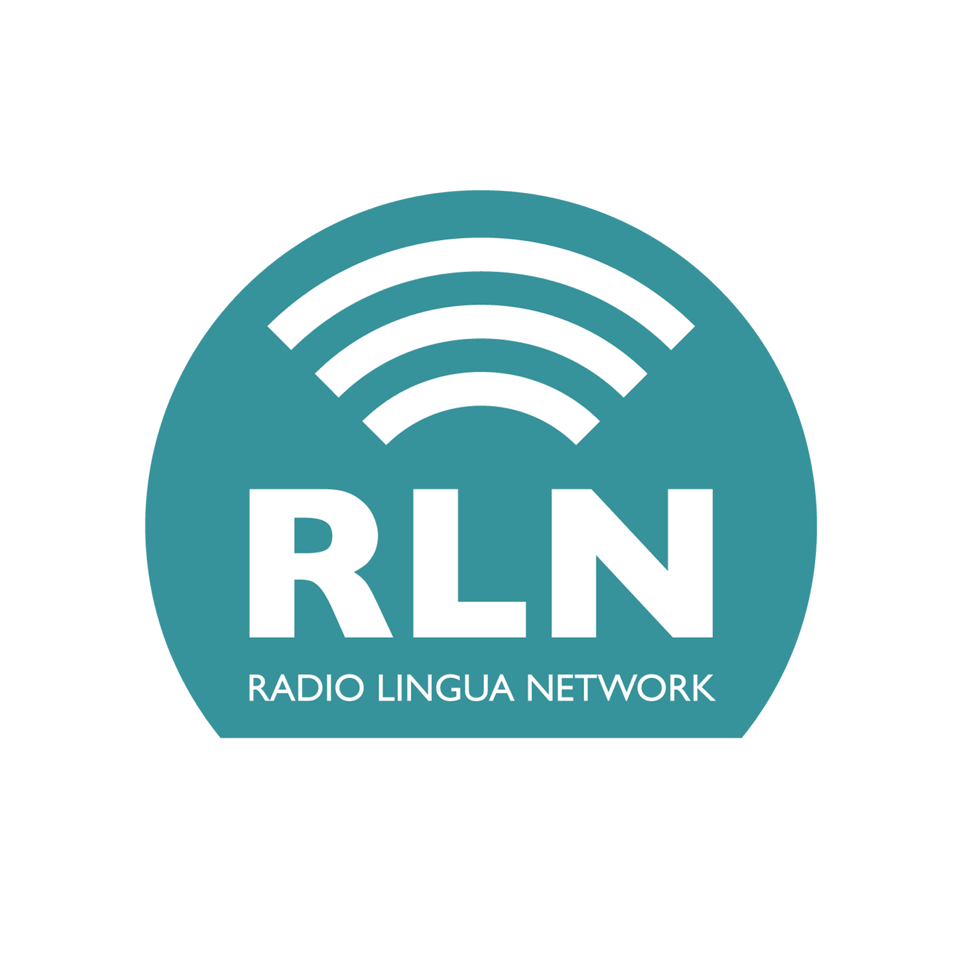¿Ser o estar? That is the question.
As you may already know, in Spanish there are two verbs that translate as “to be”, and knowing which to choose in each situation can be one of the biggest challenges for Spanish learners.
The Coffee Break Spanish Show is a podcast series of short, informal conversations to help you understand some difficult topics in Spanish. In the latest episode, Mark and Concha help us to better understand these two verbs and decide in which moments to use ser and when to choose estar.
Continue reading to find out more and why not listen to the podcast as you go?
Identity and circumstance
It is often taught that ser is used to describe something that is permanent and estar is for something that is temporary. In the episode, Concha proposes a different way to think about this:
ser – identity (as opposed to permanent)
estar – circumstance (as opposed to temporary)
Ser
Let’s look at the following description of Concha’s cousin and consider why we use ser in this situation:
Mi prima es española, es rubia, es guapa y es estudiante.
My cousin is Spanish, blonde, pretty and she’s a student.
Here, ser is used because we are identifying Concha’s cousin. Not only are we describing her nationality (es española) and her physical traits (es rubia, es guapa), but we are also saying what she does (es estudiante). It’s like playing ‘Guess who?’.
However, let’s focus on es estudiante, because here is where things get interesting. At the time we are describing Concha’s cousin, she is a student, but she will become a lawyer in a couple of years. Entonces, if it’s not something permanent, ¿por qué usamos ser? Well, we use ser because at the time of the description, she identifies herself as a student – she is not a lawyer yet!
This is a great example of why saying that ser is ‘identity’ can sometimes be a more useful way of thinking about it than ‘permanent’.
Estar
Another example will help us here, so that we can compare ser with estar. Let’s imagine Mark has a friend called Roberta, and he tells us:
Roberta es alta, es rubia y es simpática.
Roberta is tall, blonde and friendly.
Let’s say the same Roberta decided to change her hair, and when Concha saw her for the first time, she was not very friendly with her. Then, Concha would tell us:
Roberta es alta, es pelirroja y es antipática.
Roberta is tall, red-haired and unfriendly.
Mark saw her that very same day, but his description would be:
Roberta es alta, está pelirroja y está antipática.
Roberta is tall, red-haired and unfriendly.
As we can see, Mark has changed ser for estar. He says está pelirroja because he knows she used to be blonde, and he says está antipática because Roberta is a nice person, but that day she wasn’t as nice as usual.
These two changes in the verb are because the circumstances have changed for Mark (but not for Concha) and now Roberta has red hair and is unfriendly.
We can clearly see this contrast in these sentences:
El cielo es azul pero hoy está gris.
The sky is blue but today it’s grey.
La sala es grande y hoy está llena.
The room is big but today it’s full.
You might notice that hoy (“today”) helps to show that the meaning of something is circumstantial and may change.
¡Hora de practicar!
Now it’s time to test yourself! ¡Vamos a ponernos a prueba! Translate the following sentences into Spanish. You’ll find the answers at the end of the article. ¡Mucha suerte!
- Pedro is a healthy boy, but today he is sick.
- Normally, you are serious, but today you are funny. (Use either tú or usted.)
We hope that you found this article useful. Make sure to listen to the full episode with Mark and Concha on The Coffee Break Spanish Show. In our next episode, we’ll be continuing with this topic and we’ll be exploring situations in which the choice of ser or estar changes the meaning of a phrase. Subscribe to our podcast feed and our channel on YouTube so that you know when the next episode is available.
Plus! To get regular free Spanish lessons in your inbox, you can sign up for our short (coffee-break-sized) email lessons that will help you improve your Spanish. You will also hear from Mark, the founder of Coffee Break Languages, giving advice for language learners at any level. Sign up below!
Keep practising using ser and estar, and whenever you’re unsure which to use, just think about whether it’s a question of identity or circumstance.
Happy Coffee Breaking!
PS. Here are the answers to the translation challenge.
- Pedro is a healthy boy, but today he is sick. – Pedro es un chico sano pero hoy está enfermo.
- Normally, you are serious, but today you are funny. – Normalmente, eres serio, pero hoy estás gracioso. / Normalmente, es serio, pero hoy está gracioso.









